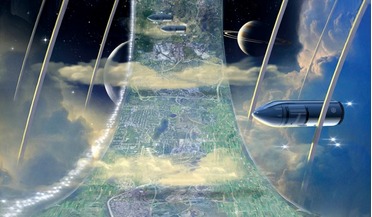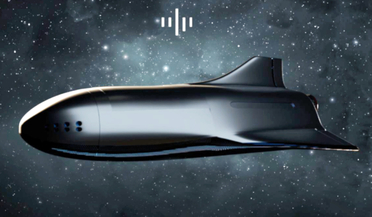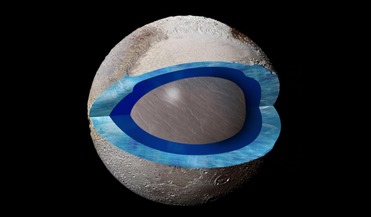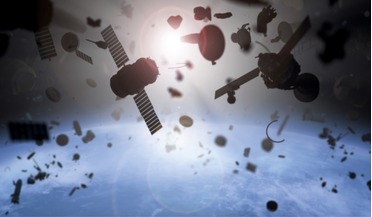ROOM: The Space Journal is one of the major magazines on space exploration, technology and industry. At ROOM, we share a common goal – promotion of peaceful space exploration for the benefit of humankind, all while bringing you comprehensive articles on an array of contemporary topics. Our authors include analysts and industry leaders from all over the world, which lets us bring you the most up-to-date and detailed information about sputnik spaceship.
 February 2019
A universal spaceship design concept
February 2019
A universal spaceship design concept
...moons or asteroids if the gravitational pull of the body is sufficient. Requirements for a compact and lightweight spaceship construction are always challenging - and especially so when the design process has to recognise the demands of ...a crew. As a result, a spaceship hull should be designed for: the use of any existing gravity as well as the generation of artificial gravity...
 October 2024
The Human Spaceship - Off Balance
October 2024
The Human Spaceship - Off Balance
... innovation using creative thinking to enhance this research. Her pioneering and visionary project, The Human Spaceship, unites art and science, through the production, publication and public display of bold paintings of.... We can expect three main types of optical illusions to manifest themselves on the Moon, Mars and in spaceships: Literal illusions such as pareidolia (detecting an object, pattern, or meaning where there is none), rapid light...
 10 January 2020
Virgin Galactic's second spaceship completes a major build milestone
10 January 2020
Virgin Galactic's second spaceship completes a major build milestone
...Branson took to Twitter to congratulate the team behind the build. “Congratulations to the team as the second spaceship in @VirginGalactic's fleet completes a major build milestone.” But the fleet is not stopping there. Virgin Galactic...Virgin Galactic has at present, over 600 customers around the world that are signed up to fly onboard Spaceship Two, but the company expects this number to rise substantially – possibly into the tens of thousands –...
 31 December 2020
'mu Space' to build Thailand's first spaceship in 2021
31 December 2020
'mu Space' to build Thailand's first spaceship in 2021
... the private satellite and space technologies firm ‘mu Space’ has raised funds to build Thailand’s first spaceship and plans to start construction in 2021. Looking similar in design to SpaceX’s Starship – the ...a new era by planning to develop space technologies for future space travel,” say “mu Space”. “However, building a spaceship with a complexity of technologies is one of the challenging tasks that a company wants to achieve, it might take ...
 March 2016
Why We Need Space Artists
March 2016
Why We Need Space Artists
... in 1991, plus a 3D model of New Horizons by Dan Durda added in 2015. Note the atmospheric haze, the similarity to Sputnik Planum, and the chasms on Charon! (Gouache + digital) Gemini 6 and 7 docking in December 1965. There was nobody... as I did around 1950. A few years later saw the dawn of the Space Age, with the launch of Sputnik 1, and we began to see the work of Second Generation artists, who could build upon the work of those...
 November 2016
Microgravity and space research: Bringing the commercial market into focus
November 2016
Microgravity and space research: Bringing the commercial market into focus
.... As the capacities increased, the USSR and the USA became capable of sending the first satellites such as Sputnik into space in 1957. The effects of low, or zero gravity, were nevertheless not studied much before the...
...future as Earthlings. Planetary collaboration Another term that is often used in support of this discussion is ‘Spaceship Earth’. The term Spaceship Earth was popularised by Buckminster Fuller who in 1968 wrote the book, Operating Manual for... successfully build and operate the ISS, why can’t we decide to do the same with our purpose-built Spaceship Earth? I believe we can, and I also believe this is why it’s so important for us to acknowledge and ...
 18 November 2016
Pluto's heart is an ocean of slushy ice
18 November 2016
Pluto's heart is an ocean of slushy ice
... links with the evolution of key features such as the vast, low-lying basin known as Sputnik Planitia (formerly Sputnik Planum) on the heart’s western lobe. Tombaugh Regio, which is Pluto's brightest region, has...is seen in images from New Horizons which appear to show nitrogen glaciers flowing out of mountainous terrain around Sputnik Planitia. "Pluto is hard to fathom on so many different levels," says New Horizons co-investigator Richard Binzel,...
 April 2019
Cleaning up space
April 2019
Cleaning up space
More than 60 years after the first Earth orbiting satellite, Sputnik, orbital debris is recognised as a rapidly escalating problem but moves to address the issue remain in relative infancy. Five ... protect and support the sustainability of our orbital assets for future generations. The first artificial satellite, Sputnik-1, was launched in 1957, setting humankind on a course that would lead to a deep reliance on satellite data and technology...